Unit 4 A&P: Introduction to Sensory Receptors and Their Functions
1/48
There's no tags or description
Looks like no tags are added yet.
Name | Mastery | Learn | Test | Matching | Spaced |
|---|
No study sessions yet.
49 Terms
What is sensation?
Conscious awareness of incoming sensory information that occurs when sensory input reaches the cerebral cortex.
What is the role of sensory receptors?
They respond to stimuli and initiate sensory input to the central nervous system (CNS).
What is a transducer in the context of sensory receptors?
A transducer changes energy from one form to another, detecting original energy and converting it into electrical or chemical energy.
What are the two key features of sensory receptors?
They establish and maintain a resting membrane potential and contain modality-gated channels in their plasma membranes.
What is a receptive field?
The area through which a stimulus is detected, with size inversely correlating with receptor density.
How does receptive field size relate to receptor density?
The more receptors present, the smaller and more frequent the receptive fields; larger fields lead to less precise localization of stimulation.

What are tonic receptors?
Receptors that respond continuously to stimuli at a constant rate, maintaining sensitivity over time.
What are phasic receptors?
Receptors that detect new stimuli or changes in the state of a stimulus, undergoing rapid adaptation.
What distinguishes general sense receptors from special senses?
General sense receptors are typically simple in structure, while special senses involve specialized, complex sense organs.
What are exteroceptors?
Receptors that detect stimuli of external origin, located near body surfaces.
What are interoceptors?
Receptors that detect stimuli of internal origin, reporting changes within visceral organs.
What are proprioceptors?
Receptors located in muscles, tendons, and joints that detect body movement and position.
What do thermoreceptors respond to?
Changes in temperature, with more cold receptors than warm receptors.
What are nociceptors?
Receptors that respond to painful stimuli, detecting chemical, heat, or mechanical damage.
What is the difference between encapsulated and unencapsulated sensory receptors?
Unencapsulated receptors have free nerve endings, while encapsulated receptors have nerve endings embedded within connective tissue.
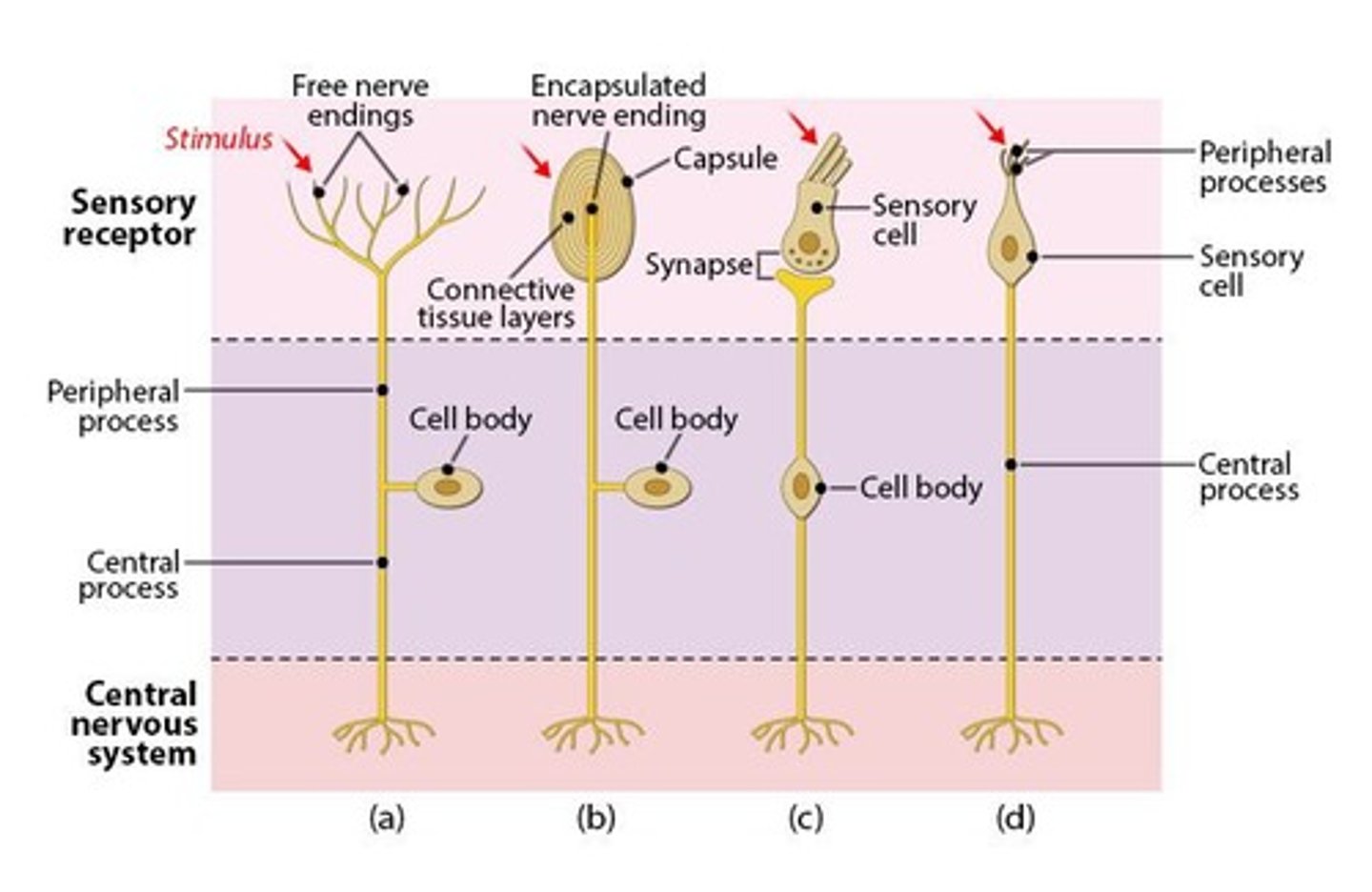
What types of stimuli do mechanoreceptors respond to?
Touch, pressure, vibration, and stretch.
What is the function of baroreceptors?
They detect changes in stretch or distention within body structures.
What do osmoreceptors detect?
Changes in solute concentration of bodily fluids.
What is the function of specialized mechanoreceptors?
They include proprioceptors that detect body position in space.
How do TRP channels function in thermoreceptors?
They allow Ca2+ to depolarize the cell in response to temperature changes.
What activates TRPM8 and TRPV1 & 2 channels?
Menthol activates TRPM8 (detects 25-28°C), while capsaicin activates TRPV1 (>43°C) and TRPV2 (>52°C).
What are the two primary types of nociceptors?
Visceral nociceptors detect internal damage, while somatic nociceptors detect changes at the body surface, joints, or skeletal muscles.
What do nociceptors respond to?
Cellular damage, noxious chemicals, and cellular signals.
What type of receptors do sensory cells possess?
Receptors to detect stimuli and stimulate peripheral neurons.
What are tactile receptors primarily responsible for?
Detecting touch, pressure, and vibrations.
Where are tactile receptors mostly located?
In the dermis and subcutaneous layer.
What are the two categories of tactile receptors?
Unencapsulated and encapsulated.

What type of sensation do tactile receptors provide?
Information about location, texture, size, shape, and movement.
What are free nerve endings?
Unencapsulated tactile receptors that detect temperature, touch, pressure, stretch, and cell damage.
What type of receptors are Merkel discs?
Flattened nerve endings associated with specialized sensory cells that detect fine touch.
What are the four types of encapsulated tactile receptors?
Tactile (Meissner's) corpuscles, Bulbous (Ruffini's) corpuscles, End bulbs (Krause's corpuscles), and Lamellated (Pacinian) corpuscles.
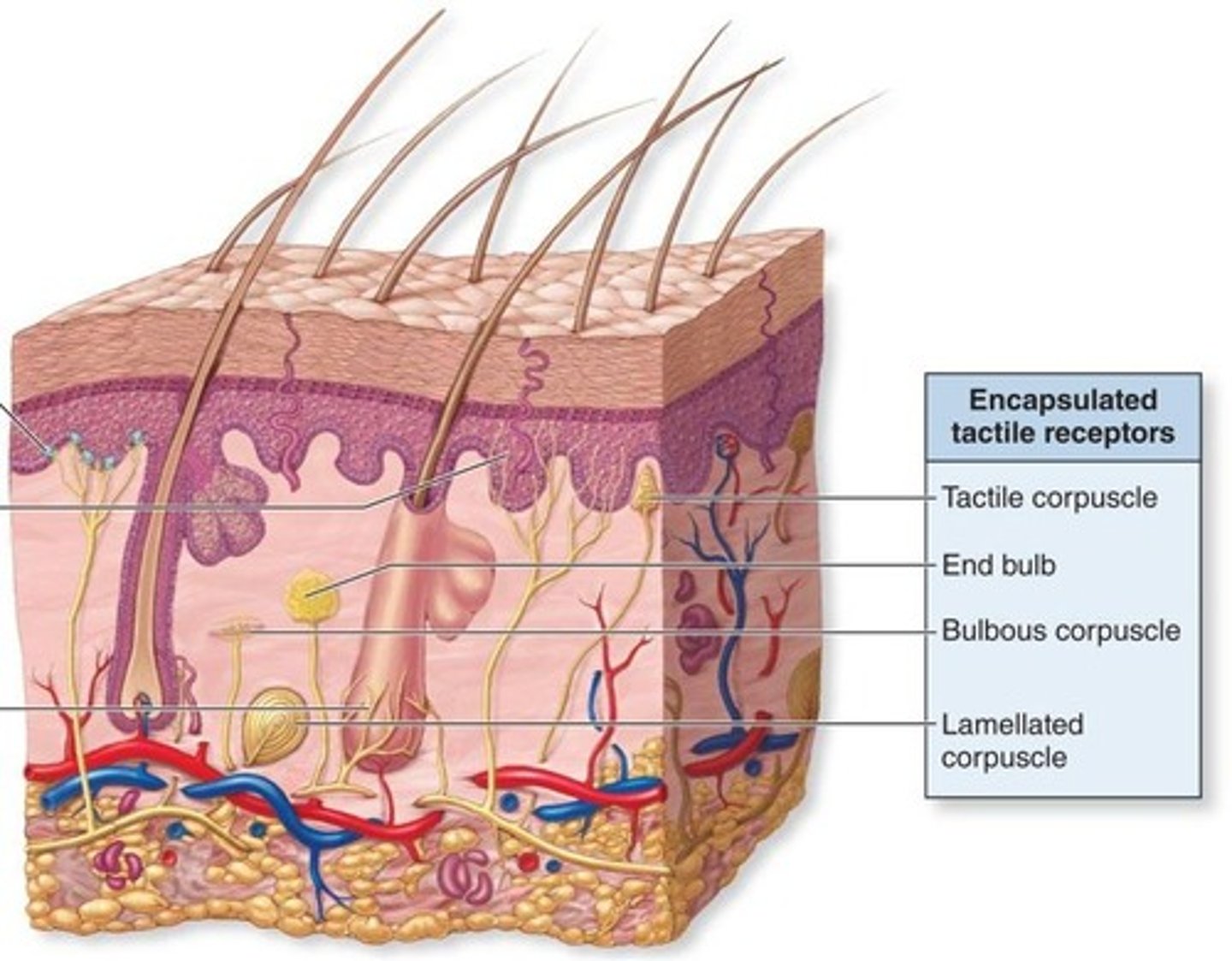
What do Meissner's corpuscles detect?
Light touch and vibrations.

Where are Bulbous corpuscles located, and what do they detect?
In the dermal layer, detecting skin distortion and continuous deep pressure.
What is the function of Krause's corpuscles?
Detecting light pressure and temperature.
Where are Lamellated corpuscles found, and what do they detect?
In hairless skin, detecting deep pressure and high-frequency vibrations.
What is referred pain?
The perception of sensory nerve signals from viscera in dermatomes of the skin.
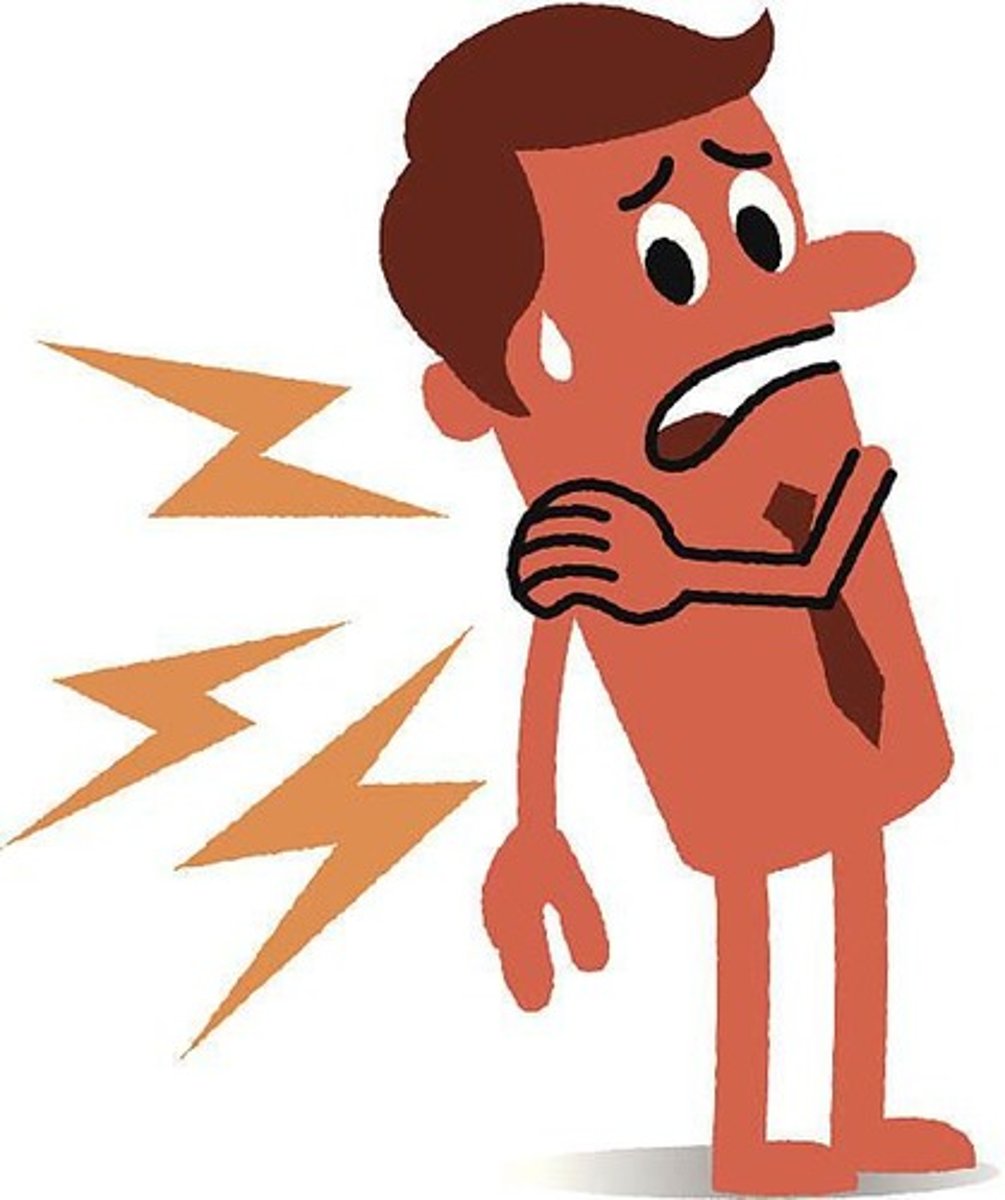
What is olfaction?
The sense of smell, involving the detection of airborne chemicals by chemoreceptors.
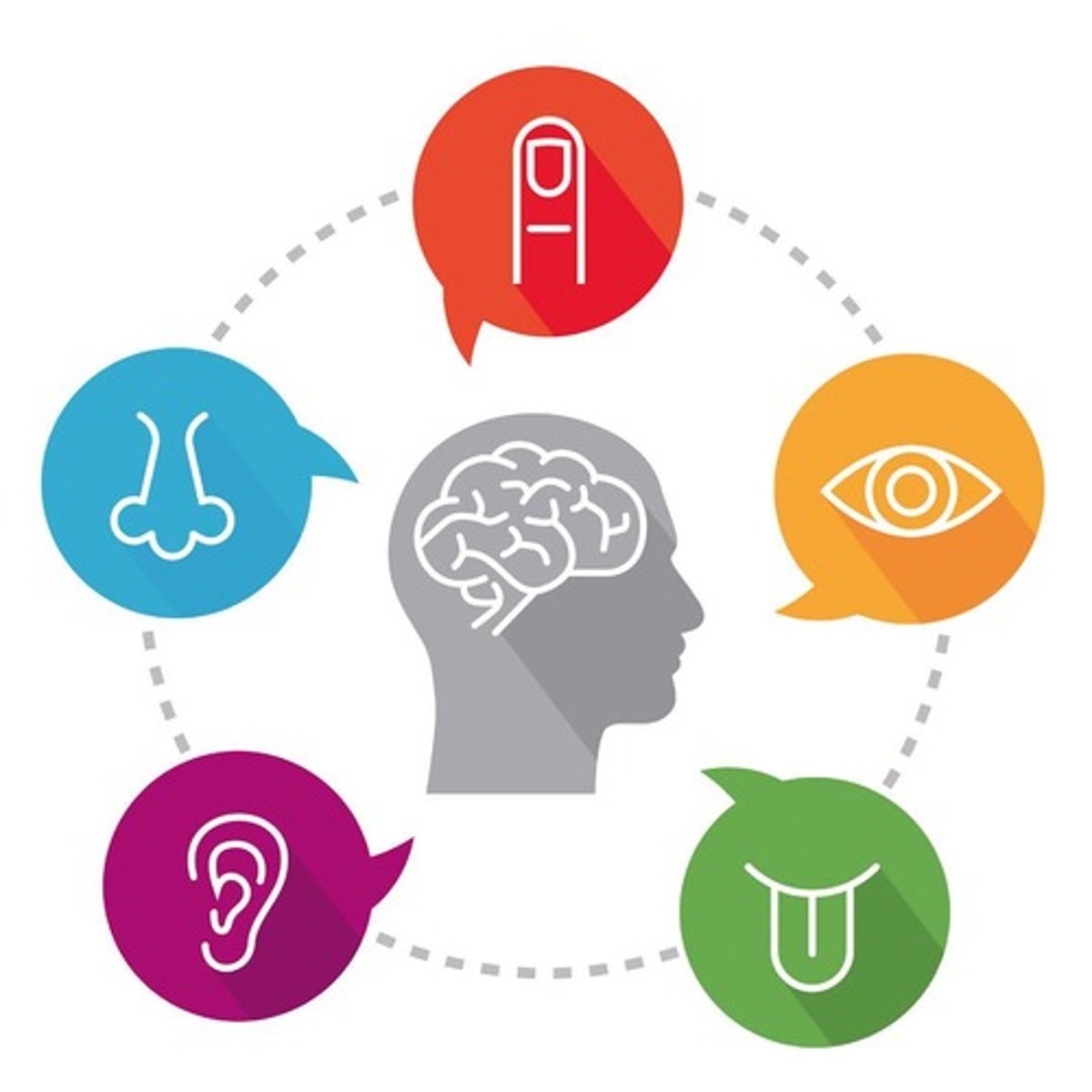
What are the three distinct cell types found in the olfactory epithelium?
Olfactory receptor cells, supporting cells, and basal cells.
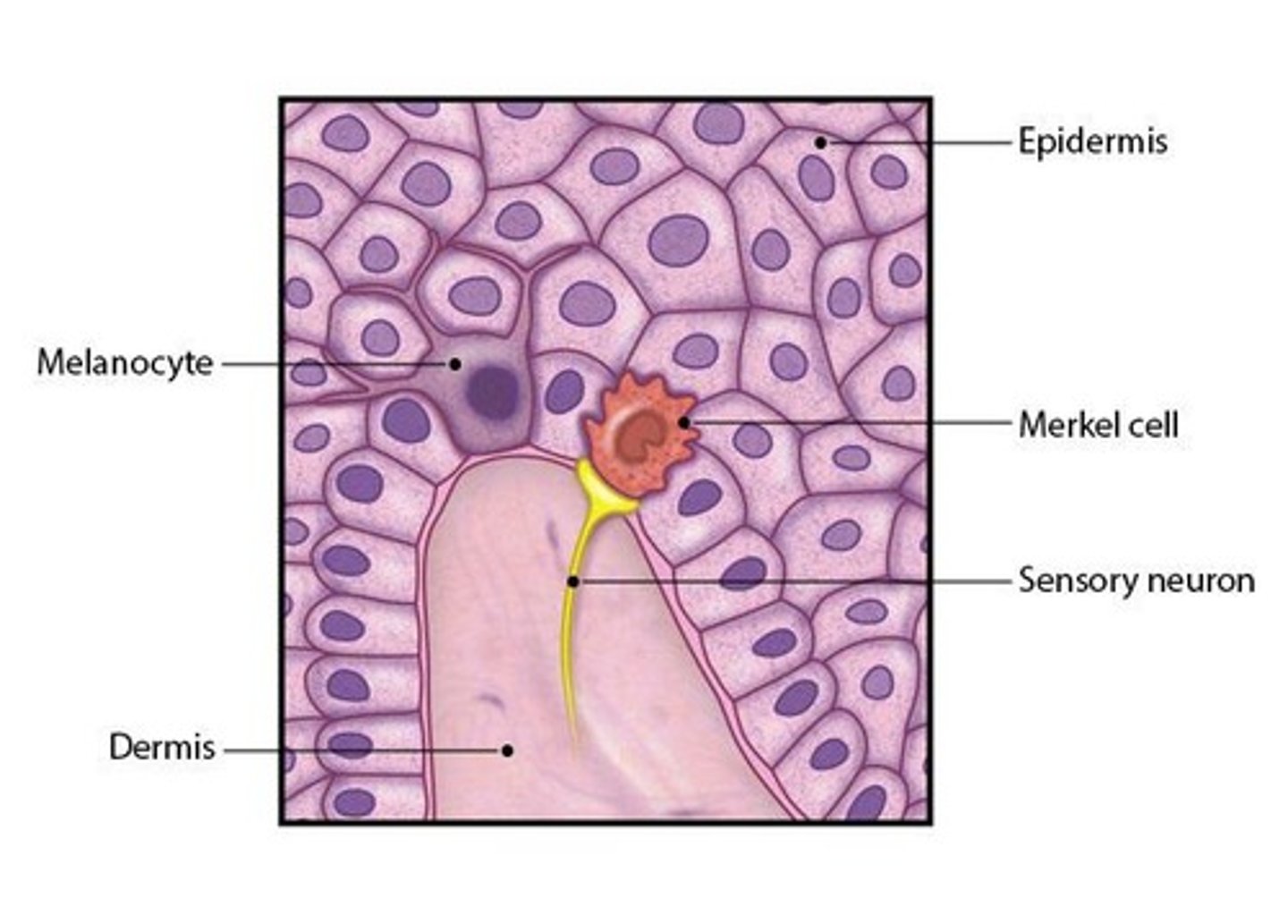
What is the role of olfactory receptor cells?
Detecting odors and transmitting signals to the CNS.
What is the function of olfactory hairs?
Possess chemoreceptors that detect specific odorants.
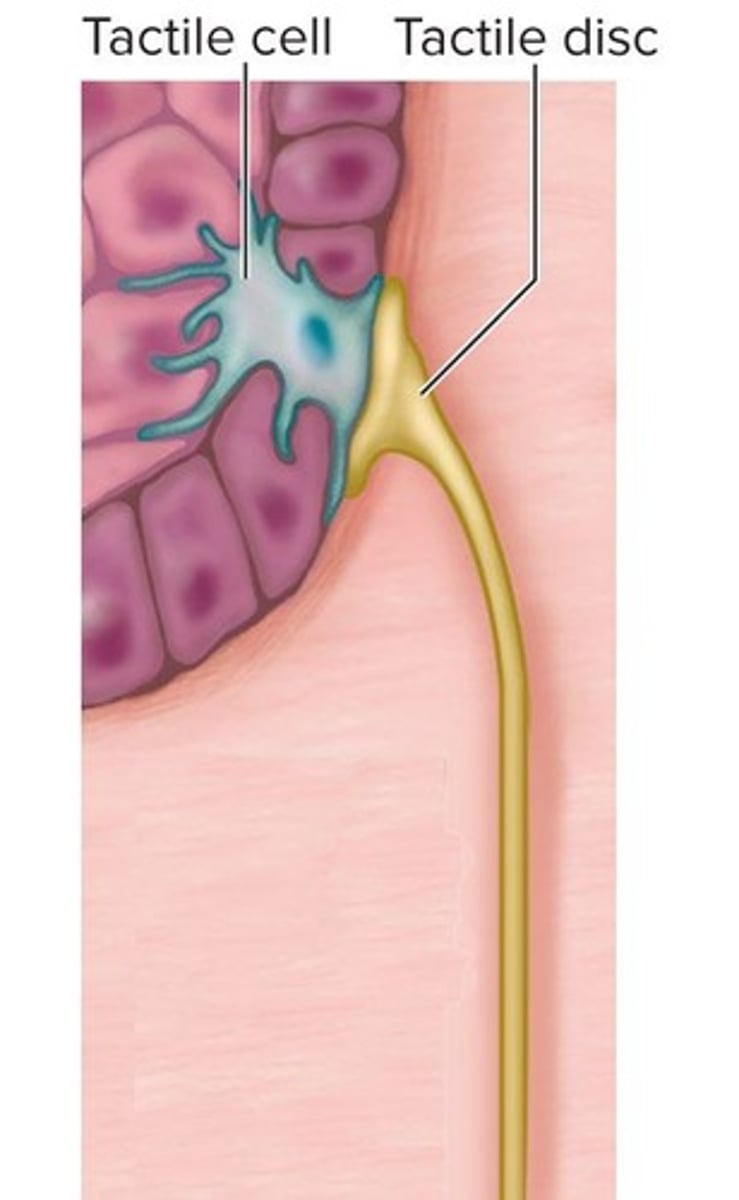
What happens at the olfactory bulb?
Olfactory nerves synapse with secondary neurons, forming olfactory glomeruli.
What is the role of mitral and tufted cells in the olfactory bulb?
They refine smell signals and relay them to the brain.
What characteristics must an odorant possess to be detected?
It must be volatile, sufficiently water-soluble, and able to dissolve in mucus.
How does olfactory transduction occur?
Through a G-protein coupled receptor called the odorant receptor, activating a cascade that opens ion channels.
What is the significance of glomeruli in olfactory detection?
They separate distinct components of odors and organize scent perceptions.
What areas of the brain do olfactory signals project to?
Cerebral cortex, hypothalamus, and amygdala.
What does the limbic system control in relation to smell?
Visceral reactions and emotional responses to odors.
How often do olfactory receptor cells regenerate?
Every 40 to 60 days.
What type of adaptation do Bulbous corpuscles exhibit?
They do not exhibit adaptation.